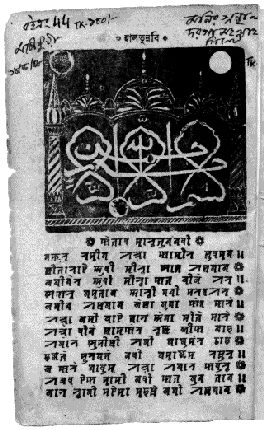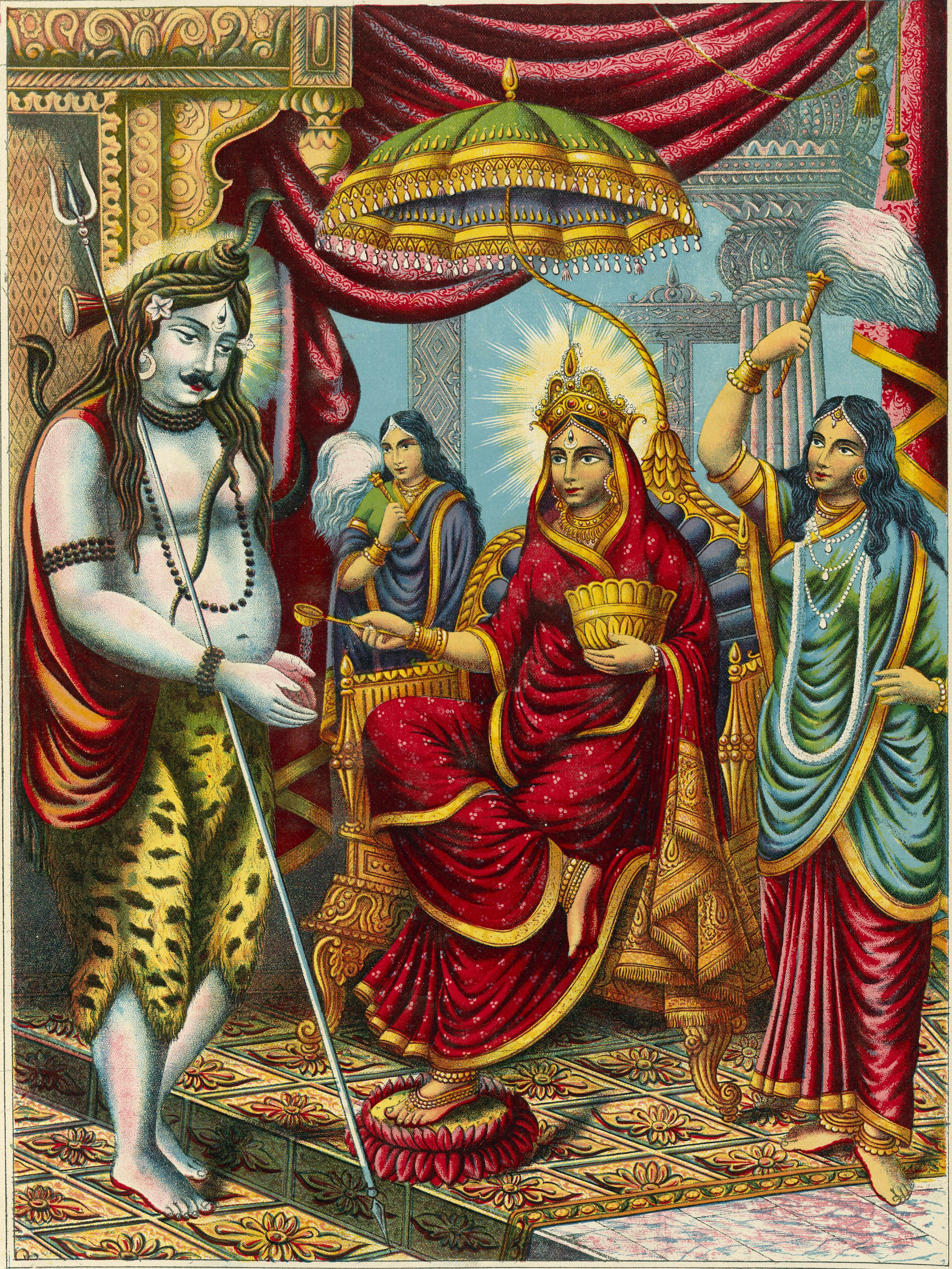|
Middle Bengali Literature
{{unreferenced, date=August 2015 The Middle Bengali Literature is a period in the history of Bengali literature dated from 15th to 18th centuries. Following the Turkic Muslim conquest of Bengal in the 13th century, literature in vernacular Bengali began to take shape. The oldest example of Middle Bengali Literature is believed to be ''Shreekrishna Kirtana'' by Boru Chandidas. The Middle Bengali Literature is divided into three periods, named Pre-Chaitanya Era, Chaitanya Era, and Later Middle Age. In the Pre-Chaitanya Era (15th century), the early Vaishnava Poetry or the Vaishnava Padavali by Chandidas and Vidyapati was composed, the first translations of ''Rāmāyana'' and ''Bhagavata'' in Bengali were made, and the tradition of Mangalkāvya flourished with '' Manasamangal'' and '' Chandimangal''. In the Chaitanya Era (16th-17th century), the later Vaishnava Poetry and the hagiography of Sri Chaitanya flourishes. In this period, the translation of ''Mahābhārata'' into Benga ... [...More Info...] [...Related Items...] OR: [Wikipedia] [Google] [Baidu] |
Middle Bengali Language
Dobhashi ( bn, দোভাষী, Dobhāṣī, bilingual) is a neologism used to refer to a historical Register (sociolinguistics), register of the Bengali language which borrowed extensively, in all aspects, from Arabic and Persian. It became the most customary form for composing ''puthi'' poetry predominantly using the traditional Bengali alphabet. However, Dobhashi literature has also been produced in the Sylhet Nagri script, as well as in the modified Arabic scripts of Chittagong and Nadia. The standardisation of the modern Bengali language during the colonial period, eventually led to its decline.Thibaut d'Hubert, Alexandre Papas (2018). ''Jāmī in Regional Contexts: The Reception of ʿAbd al-Raḥmān Jāmī’s Works in the Islamicate World, ca. 9th/15th-14th/20th Century''. pp.678. BRILL. Retrieved on 9 September 2020. Name No name has been recorded for this register during its development and practice. In the 19th century, an Anglican priest called James Long coined ... [...More Info...] [...Related Items...] OR: [Wikipedia] [Google] [Baidu] |
Daulat Qazi
Daulat Qazi ( bn, দৌলত কাজী; ) was a medieval Bengali poet, was born into a Qazi family in the village of Sultanpur in Raozan Upazila, Chittagong. Not getting any recognition at home, he left for Arakan, where he seems to have been received warmly. Life and work Qazi is believed to the first Bengali poet to write under the patronage of the Arakan court. His patron Ashraf Khan was a commanding officer of King Thiri Thudhamma, who ruled from 1622 to 1638. There is evidence in his poem, that both Khan and Qazi were Sufis.Sen, Sukumar (1993). ''Islami Bangla Sahitya'' (in Bengali), Kolkata: Ananda Publishers, , pp.23-33 Ashraf Khan asked Daulat to render the Avadhi narratives of Lor, Chandrani and Mayana into Bengali. Daulat Qazi died before he could finish his work. It was completed years later by Alaol Syed Alaol ( bn, সৈয়দ আলাওল; 1607 – 1680) was a 17th century poet of Bengal. His most well known work is ''Padmavati'', which depicts the story ... [...More Info...] [...Related Items...] OR: [Wikipedia] [Google] [Baidu] |
Alaol
Syed Alaol ( bn, সৈয়দ আলাওল; 1607 – 1680) was a 17th century poet of Bengal. His most well known work is ''Padmavati'', which depicts the story of Padmavati, the Sinhalese princess. He is considered to be one of the most prolific medieval Bengali poets. Since most of his poems combine emotion with intellect, he is called the ''Pandit Kabi'' (Pandit of Poets) of medieval Bengali literature. An important Bangladeshi literary prize, the Alaol Sahitya Puroshkar, is named after him. Life He was probably born in 1607 in the village of Jalalpur in Fatuabad Pargana, Fatehabad, to a minister in the court of Majlis Qutb, the ruler of Fatehabad.Sen, Sukumar (1993). ''Islami Bangla Sahitya'' (in Bengali), Kolkata: Ananda Publishers, , pp.34-6 He learnt the Bengali, Arabic, Persian and Sanskrit languages. Alaol was kidnapped by Portuguese pirates while travelling on a boat with his father, and was subsequently taken to Arakan. Alaol worked as a bodyguard for a while, bu ... [...More Info...] [...Related Items...] OR: [Wikipedia] [Google] [Baidu] |
Ghazal
The ''ghazal'' ( ar, غَزَل, bn, গজল, Hindi-Urdu: /, fa, غزل, az, qəzəl, tr, gazel, tm, gazal, uz, gʻazal, gu, ગઝલ) is a form of amatory poem or ode, originating in Arabic poetry. A ghazal may be understood as a poetic expression of both the pain of loss or separation and the beauty of love in spite of that pain. The ghazal form is ancient, tracing its origins to 7th-century Arabic poetry. The ghazal spread into South Asia in the 12th century due to the influence of Sufi mystics and the courts of the new Islamic Sultanate, and is now most prominently a form of poetry of many languages of the Indian subcontinent and Turkey. A ghazal commonly consists of five to fifteen couplets, which are independent, but are linked – abstractly, in their theme; and more strictly in their poetic form. The structural requirements of the ghazal are similar in stringency to those of the Petrarchan sonnet. In style and content, due to its highly allusive nature, ... [...More Info...] [...Related Items...] OR: [Wikipedia] [Google] [Baidu] |
Muslim
Muslims ( ar, المسلمون, , ) are people who adhere to Islam, a monotheistic religion belonging to the Abrahamic tradition. They consider the Quran, the foundational religious text of Islam, to be the verbatim word of the God of Abraham (or '' Allah'') as it was revealed to Muhammad, the main Islamic prophet. The majority of Muslims also follow the teachings and practices of Muhammad ('' sunnah'') as recorded in traditional accounts (''hadith''). With an estimated population of almost 1.9 billion followers as of 2020 year estimation, Muslims comprise more than 24.9% of the world's total population. In descending order, the percentage of people who identify as Muslims on each continental landmass stands at: 45% of Africa, 25% of Asia and Oceania (collectively), 6% of Europe, and 1% of the Americas. Additionally, in subdivided geographical regions, the figure stands at: 91% of the Middle East–North Africa, 90% of Central Asia, 65% of the Caucasus, 42% of Southeast As ... [...More Info...] [...Related Items...] OR: [Wikipedia] [Google] [Baidu] |
Lalan Fakir
Lalon ( bn, লালন; 14 October 1772 – 17 October 1890), also known as Lalon Shah, Lalon Fakir, Shahji and titled Fakir, Shah, was a prominent Bengali spiritual leader, philosopher, mystic poet and social reformer. Regarded as an icon of Bengali culture, he inspired and influenced many philosophers, poets and social thinkers including Rabindranath Tagore, Kazi Nazrul Islam and Allen Ginsberg. Lalon's philosophy of humanity rejects all distinctions of caste, class, and creed and takes stand against theological conflicts and racism. It denies all worldly affairs in search of the soul and embodied the socially transformative role of sub-continental Bhakti and Sufism. Lalon founded the institute known as Lalon Akhra in Cheuriya, about from Kushtia railway station. His disciples dwell mostly in Bangladesh and West Bengal. Every year on the occasion of his death anniversary, thousands of his disciples and followers assemble at Lalon Akhra and pay homage to him through celebr ... [...More Info...] [...Related Items...] OR: [Wikipedia] [Google] [Baidu] |
Baul
The Baul ( bn, বাউল) are a group of mystic minstrels of mixed elements of Sufism, Vaishnavism and Tantra from Bangladesh and the neighboring Indian states of West Bengal, Tripura and Assam's Barak Valley and Meghalaya. Bauls constitute both a syncretic religious sect of troubadours and a musical tradition. Bauls are a very heterogeneous group, with many sects, but their membership mainly consists of Vaishnava Hindus and Sufi Muslims. They can often be identified by their distinctive clothes and musical instruments. Lalon Shah is regarded as the most celebrated Baul saint in history. Although Bauls constitute only a small fraction of the Bengali population, their influence on the culture of Bengal is considerable. In 2005, the Baul tradition of Bangladesh was included in the list of Masterpieces of the Oral and Intangible Heritage of Humanity by UNESCO. [...More Info...] [...Related Items...] OR: [Wikipedia] [Google] [Baidu] |
Bharatchandra Ray
Bharatchandra Ray Gunakor ( bn, ভারতচন্দ্র রায় গুণাকর; 1712–1760) was an 18th-century Bengali and Sanskrit Sakta court poet and song composer. He is mostly known for his poetic work, '' Annadamangal'' or ''Annapurnamangal''.Sen, Sukumar (1991, reprint 2007). ''Bangala Sahityer Itihas'', Vol.II, , Kolkata: Ananda Publishers, , pp.424-32Sengupta, Subodh Chandra and Bose, Anjali (editors), (1976/1998), ''Sansad Bangali Charitabhidhan'' (Biographical dictionary) Vol I, , p 377, He is often referred to simply as Bharatchandra. Maharaja Krishnachandra of Nadia conferred him with the title Gunakor, after which he became famous as Ray Gunakor Bharatchandra.Chakraborty, Shree Natabar (publisher), (1905/1906), ''Bharatchandrer Granthabali'', , p 19 Early years Bharatchandra was born to Narendranarayan Ray and Bhavani Devi in Penro-Bhurshut village (in the present-day Howrah district) which is currently near Amta, Howrah area. He was youngest of th ... [...More Info...] [...Related Items...] OR: [Wikipedia] [Google] [Baidu] |
Annada Mangal
''Annada Mangal'' ( bn, অন্নদামঙ্গল), or ''Nutan Mangal'' ( bn, নূতনমঙ্গল), is a Bengali narrative poem in three parts by Bharatchandra Ray, written in 1752–53. It eulogizes Hindu goddess Annapurna, a form of Parvati, worshipped in Bengal. It is the only poem in the medieval Mangalkavya tradition that does not create a separate subgenre, as no other poet ever ventured to praise Annapurna in their works. ''Annada Mangal'' is divided into three Books: ''Annada Mangal'' or ''Annada Mahatmya'', ''Bidya Sundar'' or ''Kalika Mangal'' and ''Mansingh'' or ''Annapurna Mangal''. ''Annada Mangal'' or ''Annada Mahatmya'' has three separate narratives. The first narrative describes the stories of Shiva and Dakshayani, the birth of Parvati, the marriage of Shiva and Parvati, the founding of Varanasi and Parvati's staying in Varanasi as Annapurna. The second narrative describe Vyasa's attempt to found Vyasakashi and his subsequent failure while the thi ... [...More Info...] [...Related Items...] OR: [Wikipedia] [Google] [Baidu] |
Shakta
Shaktism ( sa, शाक्त, , ) is one of several major Hindu denominations, wherein the metaphysical reality is considered metaphorically a woman and Shakti (Mahadevi) is regarded as the supreme godhead. It includes many goddesses, all considered aspects of the same supreme goddess. Shaktism has different sub-traditions, ranging from those focused on most worshipped Durga, gracious Parvati to that of fierce Kali. The Sruti and Smriti texts of Hinduism are an important historical framework of the Shaktism tradition. In addition, it reveres the texts ''Devi Mahatmya'', the ''Devi-Bhagavata Purana'', ''Kalika Purana'' and Shakta Upanishads such as the Devi Upanishad. The ''Devi Mahatmya'' in particular, is considered in Shaktism to be as important as the ''Bhagavad Gita''. Shaktism is known for its various sub-traditions of tantra, as well as a galaxy of goddesses with respective systems. It consists of the Vidyapitha and Kulamārga. The pantheon of goddesses in Shaktism ... [...More Info...] [...Related Items...] OR: [Wikipedia] [Google] [Baidu] |
Mahabharata
The ''Mahābhārata'' ( ; sa, महाभारतम्, ', ) is one of the two major Sanskrit epics of ancient India in Hinduism, the other being the ''Rāmāyaṇa''. It narrates the struggle between two groups of cousins in the Kurukshetra War and the fates of the Kaurava and the Pāṇḍava princes and their successors. It also contains philosophical and devotional material, such as a discussion of the four "goals of life" or ''puruṣārtha'' (12.161). Among the principal works and stories in the ''Mahābhārata'' are the '' Bhagavad Gita'', the story of Damayanti, the story of Shakuntala, the story of Pururava and Urvashi, the story of Savitri and Satyavan, the story of Kacha and Devayani, the story of Rishyasringa and an abbreviated version of the ''Rāmāyaṇa'', often considered as works in their own right. Traditionally, the authorship of the ''Mahābhārata'' is attributed to Vyāsa. There have been many attempts to unravel its historical growth and c ... [...More Info...] [...Related Items...] OR: [Wikipedia] [Google] [Baidu] |






